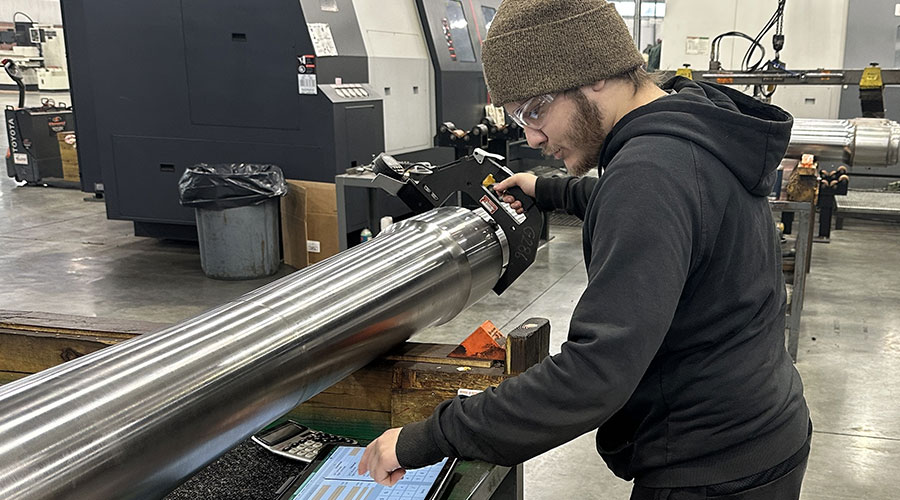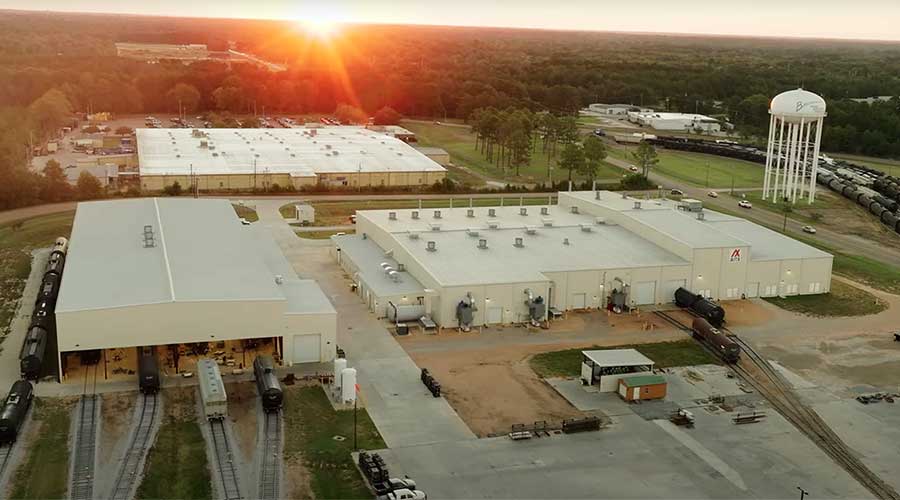Stay updated on news, articles and information for the rail industry
April 2008
Rail News: Mechanical
Technology providers offer systems to help railroads, shippers and fleet owners keep closer tabs on key assets
Manage your rail assets efficiently, and you improve your chances of actually focusing on the business of running a railroad. Operational efficiency breeds opportunity — as in the opportunity to comply with an array of federal regulations, improve customer relations and boost capacity to handle more business and, ultimately, generate more revenue.
“Everyone is trying to minimize down time,” says Sowmya Karthikeyan, senior transportation systems consultant for ALK Industries Inc. “The way [railroads] manage their assets is becoming more important.”
For help, they’re turning to technology — whether the aim is to keep closer tabs on rolling stock or fuel use, facilitate track inspection reporting or create custom billing and repair systems.
“If railroads are not using their assets effectively, there’s a great deal of money involved that’s being wasted, and it will affect the cost of operations,” says Seth Maerowitz, chief financial officer of ShipXpress, which provides Web-based asset management and utilization programs to railroads, shippers and rail-car owners.
BETTER INFORMATION MATTERS
Maerowitz and ShipXpress co-founder Charith Perera, a former CSX Transportation executive, believe that more railroaders recognize there’s a “Field of Dreams” philosophy at work, one that led to their company’s founding eight years ago.
“With better information, rail shippers will use rail more often,” says Maerowitz. “If we tie the shipper and the [railroad] together with the same information, then we’ll improve the utilization of assets.”
Other technology providers offer similar marketplace observations.
“I’ve been in a lot more meetings with the railroads recently that I have been before,” says Jimmy Finster, president of Industrial Networks Ltd.
(INet), which provides Radio Frequency Identification, Automatic Equipment Identification (AEI) and barcode data acquisition systems for manufacturing and shipping operations. “They’ve been more receptive than in the past.”
INet partners with Bourque Data Systems Inc. (BDS) to provide an integrated software solution to control shipping/receiving operations at manufacturing facilities. Bourque Data provides shipment tracking and logistics support through a variety of software packages aimed primarily at shippers.
“There is a common effort by the railroads and the shippers to make sure that cars are managed properly,” says BDS President Steve Bourque.
One result: There’s more information sharing, Bourque says, adding that shippers are much more involved in the process these days due in part to the proliferation of better, more affordable asset tracking and monitoring software.
And more railroads are beginning to embrace asset utilization technology as a way to bolster their core business, says Bourque. BDS’s offerings include
RAILTRAC® rail-car location and asset monitoring software.
Class Is aren’t the only ones buying in. Short lines, regionals, freight-car owners and shippers also are finding it easier — and less costly — to use asset management technology. AEI systems, which utilize tags and scanners to store, read and transmit car and locomotive data, are more prevalent on small roads, Bourque says.
“It probably costs about a third of what it cost five years ago, and it can be managed centrally,” he adds.
ShipXpress’ RailSync® Command system, too, has been gaining short-line and regional users since the Web-based RailSync system was acquired last year from Railinc Corp.
PREVENTIVE HEALTH CARE
But boosting capacity is only one reason railroads are tapping asset management technology. Railroads also are struggling to contend with rising fuel costs. Meanwhile, the Transportation Security Administration is seeking greater accountability from railroads on contents and location of rail cars carrying hazardous materials. More railroads recognize the cost-saving potential that comes with closer monitoring of locomotive and rail-car health.
Enter Lat-Lon L.L.C. One of the company’s most popular products remains the RailRider™ Locomotive Monitoring Unit, says Lat-Lon President David Baker. RailRider uses Global Positioning System (GPS) and wireless technology to monitor fuel usage and locomotive health, and assist trains operating in dark territory.
Also growing in popularity is the RailRider Damage Prevention Unit (DPU), a solar-powered unit that can be placed on cars to monitor ride quality, Baker says.
Customers can go online to “create their own reports, create user accounts for their customers, manage what their customers see, manage email alerting criteria, and manage the units themselves,” Baker says.
Providing customers with real-time locomotive and car data was the main mission for RFTrax when it was formed two years ago. The scope of that mission continues to expand, says National Sales Manager John Felty.
The company’s Asset Management Platform (AMP) features the Asset Command Unit, a battery-operated telemetry device with an integrated solar panel that is mounted on rail assets.
The AMP provides wireless monitoring, tracking and location reporting via GPS and cellular technology, and enables customers to access data around the clock using the RFTrax Web portal. During the first quarter, the company launched a solar-powered version for tank cars. With reporting as frequent as every 15 minutes, the system can help chemical and petrochemical shippers meet anticipated government regulations regarding shipments of toxic inhalation hazards in high-threat urban areas, Felty says.
“This is a product that will help railroads and shippers comply with [federal] rules, but most importantly, it helps them manage their cars,” he says, adding that owners of virtually all car types have expressed interest in the system.
FROM THE WAYSIDE
Although wayside detectors have been gathering more car maintenance information for railroads in recent years, getting that information quickly and into the hands of the people who need it most — field repair staff — has been challenging, says Justin Gillam, a partner in (and director of sales for) SSG Innovations L.L.C., developer of ExpressYard™.
That’s why the ExpressYard handheld and wireless system recently began adding multiple data feeds that can be sent to repair shops.
“Not only does this help the car owner by allowing their repair shops to catch these important repairs before they potentially derail a car, it also reduces the repair shops’ overhead in trying to gain access to this data” through a third party, Gillam says.
Progress Rail Services Corp. recently implemented ExpressYard to help monitor air brake tests and early warning maintenance detection and repair, Gillam says.
Maintenance is another key asset management-related area for railroads and fleet owners. ENSCO Inc. has developed two maintenance vehicle monitoring systems in conjunction with the Federal Railroad Administration’s Office of Research and Development.
The Autonomous Vehicle/Track Interaction (V/TI™) Monitoring System keeps tabs on track conditions that result in poor vehicle response, says Jeff Stevens, manager of business development in ENSCO’s Rail Technology Division. The Joint Bar Inspection System features automated machine vision technology to inventory and inspect rail joints for cracks. During the past year, ENSCO received orders for 110 VTI systems, primarily from BNSF and Union Pacific Railroad, Stevens says.
ENSCO also is working with Canadian Pacific Railway to develop an enhanced VTI system that would include new sensors and measurement processing outputs, as well as full-scale Autonomous Track Geometry Measurement.
NET ACCESS
The Internet and easily readable graphics are at the heart of systems developed by iIRX L.L.C. “Constant editing and auditing live” online is part of what makes the company’s rail mechanical management systems popular among railroads and shippers, says President Mike Edwards.
“We have virtually eliminated mistakes in car repair billing,” he says.
The iRis™ software system allows private car owners to create a car management, billing and repair system that is managed online. Private-car owner CIT Rail is the company’s biggest customer. The company also serves Chicago Freight Car Leasing Co. and Cedar American Rail Holdings Inc.
Meanwhile, the company’s iRIS Fast Track™ software program allows railroads to create and manage an online billing system, while iRIS Shop Track™ provides online auditing and billing functions for repair shops.
“The railroads want to push cars along the tracks, and this is where we can step in and become partners with them,” Edwards says.
When it comes to technological innovation, that’s just how the railroads want it.
— Robert J. Derocher is a Loudonville, N.Y.-based free-lance writer.
Keywords
Browse articles on rail car locomotive rail car fleetContact Progressive Railroading editorial staff.


 2025 MOW Spending Report: Passenger-rail programs
2025 MOW Spending Report: Passenger-rail programs
 Gardner steps down as Amtrak CEO
Gardner steps down as Amtrak CEO
 Guest comment: Oliver Wyman’s David Hunt
Guest comment: Oliver Wyman’s David Hunt
 Women of Influence in Rail eBook
Women of Influence in Rail eBook
 railPrime
railPrime







